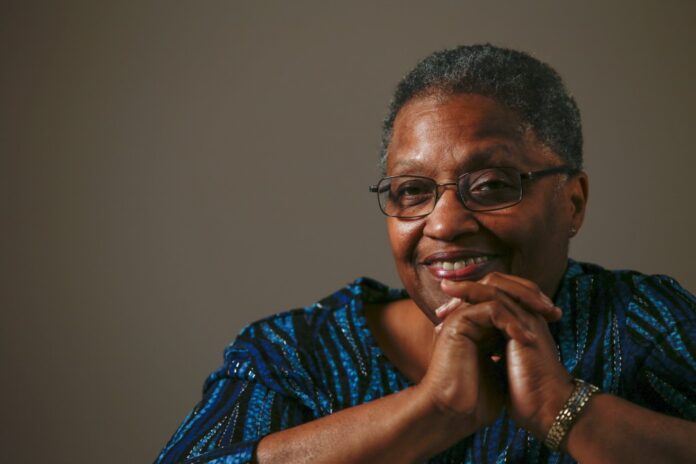As the crimson sunset over Central Park heralded the arrival of fall, I started up my computer and activated the Zoom link for my virtual chat with Dr. Alexa Canady. As I plugged in my headphones and checked whether my background was devoid of any distractions, Dr. Canady’s face popped in a separate square on the screen. She joined the chat from Pensacola, Fla., while I was at the Mount Sinai Hospital in New York City. After some small talk, we delved into our conversation about how her stellar career as the first black woman neurosurgeon could inform the neurosurgical field about the imperative need to diversify the workforce.
In light of reports which indicate that non-white US inhabitants will constitute over 50% of the population by 2045, the case for neurosurgical workforce diversity has never been more powerful.1 Even though neurosurgery has benefitted immensely from immigrants, women, surgeons with disabilities and other groups underrepresented in medicine (URiM), the workforce has yet to reflect the demographic makeup of the community it serves.2,3 Women make up a mere 10% of the workforce while Black and Latinx individuals constitute 4.8% and 5.8%, respectively.3,4
You started your undergraduate education as a mathematics major but ended up graduating in zoology. How did your change in academic interest influence your decision to become a physician?
“Since I was a little girl, I had intended to be a mathematician, and as I studied mathematics, it became clear that I could no longer see myself as a lifelong mathematician. I was lost, because I did not have any other career aspirations,” replied Dr. Canady. The following semester, she devoted herself to her budding role as a writer for The Michigan Daily, an independent student-run newspaper at the University of Michigan. Even as her growing indifference to her mathematics classes led to academic probation, Dr. Canady chose to explore her other interests rather than dwelling on the potholes along her undergraduate journey.
“I never doubted my ability; I just doubted my direction. Soon I became the summer editorial page editor of The Michigan Daily, and my brother, a University of Michigan alum, told me about an internship for minority students interested in exploring a medical career. Since I wanted to buy a car, I took both jobs. I attended lectures, conducted lab research, and shadowed my mentor, Dr. Arthur Bloom, at the genetics clinic during the day before working at the newspaper after 5 pm. After the internship I began to face to medicine, and I changed my major to zoology because all my 300-level mathematics courses counted toward the major,” remarked Dr. Canady.
In pursuing your career path when diversity was not embraced, did you perceive any additional challenges?
“I had a co-resident who was convinced that women should not be neurosurgeons, something I found out from him in 2019. He later changed his mind after working with me, and we became great friends. After becoming department chair, I did not have difficulty attracting a diverse faculty because prospective applicants perceived a different environment. The problem was getting people to come to Detroit, because Detroit had the reputation of the murder capital of the US, albeit Houston had the most murders. However, once newly-hired neurosurgeons came to Detroit, they enjoyed living there.”
What are the strategies that can help our quest in improving diversity in medical schools and neurosurgery?
“Having diverse faculty that represents the community it serves needs an important box in the chairman’s periodic evaluation checklist. Rather than keeping their trainees as faculty, programs should prioritize intellect and diverse perspectives over comfort by hiring neurosurgeons trained in other programs. Moreover, program directors should not just wait for applications from minority medical students but rather engage with local and national organizations— NMA, WINS, SNMA, ASBN, and LMSA.*
In order to truly serve the entire community, medical schools need to have a diversity of representatives involved in establishing the schools’ priorities. Fixing the barriers to care that even minority physicians encounter cannot be repaired from a limited view no matter how many evaluation sheets are completed. Medical schools should value different perspectives in their community so that future physicians can address both incurable diseases and health disparities. Neurosurgeons need to get more involved in medical education and actively dispel misconceptions that a neurosurgical career is mutually exclusive with a wholesome lifestyle.”
What is your response to the argument that emphasizing workforce diversity might compromise the quality of neurosurgery?
“Such arguments are founded on the assumption that minorities cannot become well-qualified neurosurgeons— which is specious. No one should hire a bad prospect, but we need to separate race and gender from ability and expectations.”
The call to diversify the workforce is not a plea to establish quotas but rather one for neurosurgery leaders to become talent scouts who recruit more minorities. In conclusion, advocating for the status quo or a more sluggish change jeopardizes our nation’s health by guaranteeing that individuals underrepresented in medicine remain excluded in medicine.
*NMA= National Medical Association
*WINS= Women in Neurosurgery
*SNMA= Student National Medical Association
*ASBN= American Society of Black Neurosurgeons
*LMSA= Latino Medical Student Association.
References
- U.S. Census Bureau QuickFacts: United States. Accessed April 1, 2021. https://www.census.gov/quickfacts/fact/table/US/PST045219
- Kim EE, Klein AL, Lartigue JW, Hervey-Jumper SL, Rosseau G. Diversity in Neurosurgery. World Neurosurgery. 2021;145:197-204. doi:10.1016/j.wneu.2020.08.219
- Feng R, Hoffman SE, Wagner K, Ullman JS, Stippler M, Germano IM. Women Neurosurgeons in Academic and Other Leadership Positions in the United States. World Neurosurgery. 2021;147:80-88. doi:10.1016/j.wneu.2020.12.069
- Asfaw ZK, Soto E, Yaeger KA, et al. Racial Diversity Within the Neurosurgery Resident and Faculty Workforce in the United States. Neurosurgery [in press 2021].








